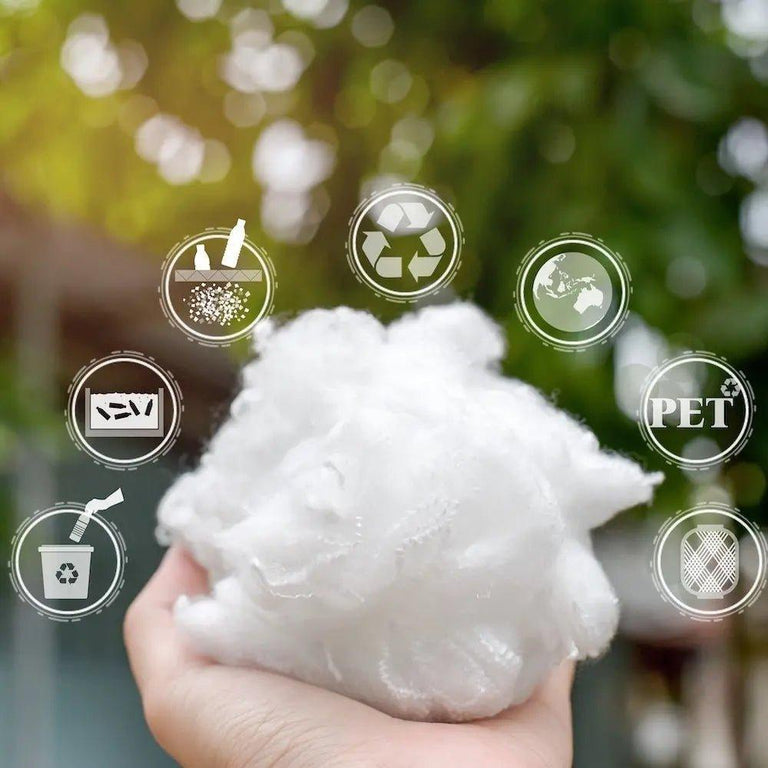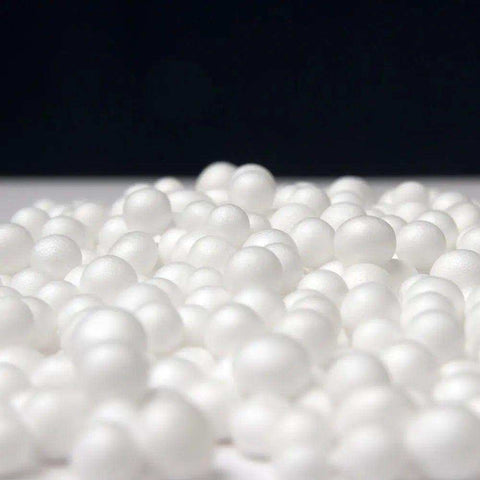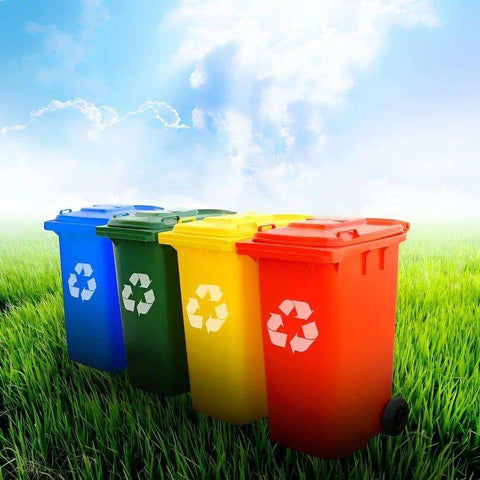Organic parents, earth lovers, and people tired of vacuuming are creating or fixing beanbags themselves. Learn what type of DIY bean bag fillers they’re using below.
You may not be surprised to know that the first bean bags were simple sacks, filled with - you guessed it - beans! Though it took thousands of seeds to fill one bag, that’s how these childhood staples got their name. Over time, bean bags filled with a variety of materials have emerged, including unconventional and recycled options that emphasise eco-friendliness and unique properties. The beanbags we know and love today no longer use organic materials. Our products use Virgin polystyrene beans and are reinforced to prevent any messy leaks. If you’ve ever had a low-quality bean bag chair spring a leak in your house, you know why that’s important. Not a good alternative to a bean bag. As the shift from organic to synthetic fillers has occurred, concerns about their environmental impact have grown, leading to increased interest in eco-friendly practices and sustainable materials. Modern fillers, such as polystyrene beans—sometimes referred to as styrofoam—are popular for their lightweight feel, but they also raise environmental concerns due to their non-biodegradable nature. Organic parents, earth lovers, and people tired of vacuuming are creating or fixing beanbags themselves. Learn what type of DIY bean bag fillers they’re using—and how these alternatives might answer the question, Why do bean bags go flat, below.
Introduction to Bean Bag Fillings
When it comes to creating a great bean bag, the filling you choose is just as important as the outer fabric. Bean bag fillings are what give bean bags their signature comfort, shape, and support, making them a favourite for relaxing in any room. From traditional beans to innovative natural materials, the type of bean bag filling you select can affect everything from the feel of your bean bag chairs to their durability and environmental impact. Whether you’re looking for a soft, sink-in experience or a firmer seat, understanding the different bean bag fillings available will help you find the perfect match for your needs. In this section, we’ll break down the most popular materials used to fill bean bags, highlight their unique benefits, and offer tips on choosing the best quality filling for your next bean bag project.
alternative bean bag fillers: stuffing
You can buy quilt and pillow stuffing at craft stores, often at the cheapest prices for bulk stuffing. This cottony, spongy fabric is what is in most stuffed animals and throw pillows. It makes a great bean bag seat filler, with a heavenly pillow-top feel. If it starts to get flat, you can fluff the bean bag like a big pillow. Or, throw it down the stairs like my five-year-old swears by for violent fluffing.
Alternatively, you can purchase affordable foam filling from stores like Clark Rubber or online. Foam filling is available in different shapes and sizes, which can affect the softness, comfort, and adaptability of your bean bag.
If you don’t want to spend money at the craft store, figure out what you have around the house. Do your kids have stuffed animals they haven’t looked at in years? Off with their heads! Yes, we mean literally. Cut open old and unloved stuffed animals and use the insides to stuff your bean bag. You may need to supplement some from the store, depending on the size of your stuffed zoo. Foam filling is also available in various shapes, which can change the feel and how well the bean bag adapts to different shapes.
shopping bags
You know those plastic grocery sacs you always come home with, even though you’ve spent money on reusable bags? The ones that you never remember to take out of the car? These bags make great DIY bean bag fillers. They’re soft, light, and easily fluffed. If you’re going to use this method, you’ll want to collect bags for some time before what looks like a lot of bags in storage compacts down fast. You can ask friends or family to save some for you or give you what they have around the house. When you have enough bags (there’s no one correct number), ball them up. You want to twist the handle of the bag, so it holds it in a ball shape, even if it’s not very secure. You don’t need to worry about the balls keeping their shape when they’re inside the bag. With this project, you’ve not only cleaned out your cupboards, but you’re recycling as well! This is a great way to recycle plastic bags and reduce waste. However, recent changes to single-use plastic bags may make this option a little more difficult!
organic material
There’s a big divide between people who want to use natural materials like pine needles and leaves in bean bags and those who don’t. The proponents on the pro side argue that it’s nature’s cushioning, which is how mattresses of the past got their shape. The con side says that the organic bean bag filling materials will break down, creating a kind of in-bag compost. Compared to other materials and other fillings, such as hay, dried beans, or recycled options, these organic choices offer unique benefits and drawbacks in terms of comfort, sustainability, and durability.
eco-beans
A New Zealand-based company, Bio Polymer Network, has created an organic, plant-based beanbag filling. While traditional EPS beans are a common and recyclable filling material, eco-beans offer a more sustainable and fully compostable alternative. Eco-Beans are 100% compostable and are manufactured from a sustainably sourced plant-derived material. The innovative product is technically called expanded polylactic acid or EPLA. PLA is one of the most widely used bio-based polymers in the world today. Eco-Beans are sold in Australia by Envee and can be purchased online through their website.
beans
Yes, you can still make a bean bag with beans. No one’s stopping you! If you want to fill a bean bag with beans, we suggest starting at a big-size store. It’ll take quite a few to fill up your comfy seat. The best types of beans for bean bag chairs? It doesn’t matter. Dried and clean is what you need. You can mix bean types or use whatever is most readily available. If your bean bag starts to lose its shape or volume over time, you can easily refill it with more beans or a mix of beans and other fillers. If you don’t want to buy pounds of beans, you can combine the beans with another fill method. Something like grocery bags and beans works well. It’ll give the bag some weight so that it won’t fly out from underneath you. On the other hand, because the beans weigh more than the different types of filling, they will sink to the bottom of the bag.
rice
If you're determined to fill your bean bag with something you can buy at your local grocery store, then get a massive bag of rice. Your bean bag will be a big version of those little rice heat pillows people make. We wouldn't recommend microwaving it, though. You can mix rice and beans (yum!) for a substantial but form-hugging bean bag filling
packing peanuts
No, these aren't natural, and they can be a pain to clean up if your child likes to tear them apart (are we the only ones?) But they make a great bean bag filling. Unless you're going to the post store to buy a large quantity, this is another one you'll have to save up for. Keep them in a large rubbish sack until you have enough to fill a bean bag. Don't want to stalk the post for packing-peanut-filled boxes? These work particularly well with the plastic-bag filling method.
old clothes
Kids grow out of clothes so fast, and we often can’t donate their clothes quick enough. If you have a towering outgrown pile, ball up each piece and throw it in the bean bag. Using old clothing is an excellent way to recycle and repurpose materials for filling bean bags, making it an environmentally friendly option. Warning, these make the bags a little lumpy, but all is well with some fluffing. We recommend this style to people who like to flop down on their bean bags, as the clothes won’t go everywhere if the bag bursts a seam. Do not use this method if you have kids who like to do giant pillow fights with bean bags. They get heavy, and someone could get seriously hurt.
Synthetic Fillers
Synthetic fillers are a staple in the world of bean bag fillings, with polystyrene beads and expanded polystyrene beans leading the way as the most popular choices. These lightweight materials make it easy to move your bean bag around the house, and their ability to conform to your body provides excellent support and comfort. Expanded polystyrene, in particular, is known for its durability and resilience, helping your bean bag maintain its shape over time. For those seeking a little extra bounce, shredded foam can be mixed with polystyrene beads, which reduces noise and adds a plush feel to your bean bag. While synthetic fillers are convenient and long-lasting, it’s important to note that they are not the most eco-friendly option, as they are made from non-biodegradable materials. When selecting synthetic bean bag fillings, consider your priorities—whether it’s cost, comfort, or durability—to ensure your bean bag remains a cozy retreat for years to come.
Environmentally Friendly Considerations
If you’re looking to create an eco-friendly bean bag, there are plenty of sustainable alternatives to traditional synthetic fillings. Natural materials, such as dried beans, cedar shavings, and even hay or seeds, offer a biodegradable and non-toxic way to fill your bean bags. These options not only reduce your environmental footprint but can also add a unique texture and, in the case of cedar shavings, a beautiful fragrance to your bean bag. Recycled materials, such as old clothes and soft toys, are another great option for those who want to give new life to items that might otherwise end up in a landfill. By choosing environmentally friendly bean bag fillings, you’re supporting sustainable practices and creating a bean bag that’s as kind to the planet as it is comfortable. Just remember to consider the durability and comfort of your chosen material, as some natural fillings may break down faster than synthetic ones.
Bean Bag Chair Comfort
The secret to a great bean bag chair lies in its comfort, and that all comes down to the filling. The right bean bag filling should strike a balance between support and softness, adapting to your body’s shape while providing a cozy place to relax. If you prefer a firmer seat, fillings like polystyrene beans or dried beans are ideal, offering structure and stability. For those who love to sink into their bean bag, shredded foam or memory foam creates a plush, cloud-like feel that’s perfect for lounging. The shape and consistency of the filling also play a role—some materials hold their original shape better, while others mould to your body for a custom fit. When choosing a bean bag filling, consider how you’ll use your bean bag and the level of comfort you desire, so you can enjoy a great bean bag experience every time you sit down.
Benefits of Alternative Fillers
Exploring alternative fillers for your bean bag can unlock a world of benefits beyond traditional options. Materials like crumbed foam, natural materials, and recycled materials not only provide a comfortable and supportive seat but also contribute to a more eco-friendly lifestyle. These alternatives can be more durable, reducing the need for frequent refills and saving you money in the long run. Additionally, using recycled materials or a combination of different fillings can help reduce shipping costs and minimise waste, making your bean bag both affordable and sustainable. Creating your own unique blend—such as combining beans and foam—can result in a great bean bag filling that’s tailored to your comfort preferences and environmental values. With so many options available, it’s easier than ever to fill your bean bag with materials that are good for you and the planet.
the best diy bean bag fillers
We're biased, but we think the best bean bags are those that are made by professionals. There's nothing wrong with fixing something you have, but we wouldn't go out of our way to save years' worth of packing peanuts. We've been selling our bags for years and have had minimal complaints. Remember not to dive bomb into a bean bag, unless you know it can handle the force and your weight. Not sure how many beans you need? See our article on how many bags of beans you need to fill a bean bag. If your bean bag breaks, try the DIY bean bag fillers above; otherwise, browse our products to see if any strike your interest.




